
Schuylkill County is a county in the Commonwealth of Pennsylvania. As of the 2020 census, the population was 143,049. The county seat is Pottsville. The county is part of the Northeast Pennsylvania region of the state.
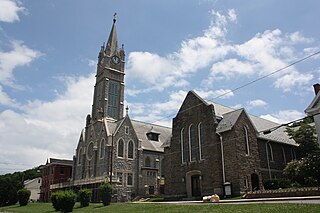
Lansford is a county-border borough (town) in Carbon County, Pennsylvania, United States. It is part of Northeastern Pennsylvania. It is located 37 miles (60 km) northwest of Allentown and 19 miles south of Hazleton in the Panther Creek Valley about 72 miles (116 km) from Philadelphia and abutting the cross-county sister-city of Coaldale in Schuylkill County.

Mahanoy City is a borough located 38 miles (61 km) southwest of Wilkes-Barre and 13 miles southwest of Hazleton, in northern Schuylkill County, Pennsylvania, United States. It is part of the Coal Region of Pennsylvania and is surrounded by Mahanoy Township.

Pottsville is a city and the county seat of Schuylkill County, Pennsylvania, United States. The population was 13,346 at the 2020 census, and is the principal city of the Pottsville, PA Micropolitan Statistical Area. The city lies along the west bank of the Schuylkill River, 52 miles (84 km) south of Wilkes-Barre. It is located in Pennsylvania's Coal Region.

Tamaqua is a borough in eastern Schuylkill County in the Coal Region of Pennsylvania, United States. It had a population of 6,934 as of the 2020 U.S. census.
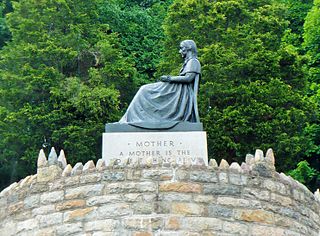
Ashland is a borough in Schuylkill County in the U.S. state of Pennsylvania, 15 miles (24 km) northwest of Pottsville. It is part of Northeastern Pennsylvania. A small part of the borough also lies in Columbia County, although all of the population resided in the Schuylkill County portion as of the 2020 census. The borough lies in the anthracite coal region of eastern Pennsylvania. Settled in 1850, Ashland was incorporated in 1857, and was named for Henry Clay's estate near Lexington, Kentucky. The population in 1900 was 6,438, and in 1940, 7,045, but had dropped to 2,471 at the 2020 census.
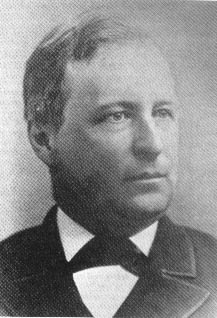
Franklin Benjamin Gowen served as president of the Philadelphia and Reading Railroad, commonly referred to as the Reading Railroad, in the 1870s and 1880s. He is identified with the undercover infiltration and subsequent court prosecutions of Molly Maguires, mine workers, saloonkeepers and low-level local political figures who were tried for multiple acts of violence, including murder and attempted murder of coal mine operators, foremen, workers, and peace officers.

Henry Clay Pleasants was a coal mining engineer and an officer in the Union Army during the American Civil War. He is best known for organizing the building of a tunnel filled with explosives under the Confederate lines outside Petersburg, Virginia, which resulted in the Battle of the Crater on July 30, 1864. The Union troops, however, failed in their opportunity to break the Siege of Petersburg.
The Republican Herald is a daily newspaper serving Pottsville, Schuylkill County, Pennsylvania. The newspaper is owned by MediaNews Group, a subsidiary of Alden Global Capital.

The Pennsylvanian Pottsville Formation is a mapped bedrock unit in Pennsylvania, western Maryland, West Virginia, Ohio, and Alabama. It is a major ridge-former in the Ridge-and-Valley Appalachians of the eastern United States. The Pottsville Formation is conspicuous at many sites along the Allegheny Front, the eastern escarpment of the Allegheny or Appalachian Plateau.
The Mahanoy Plane was a railroad Incline plane located along northern edge of the borough of Frackville, Schuylkill County, Pennsylvania in the Coal Region of the United States. GPS coordinates of the abandoned site are, DMS: N 40° 47’ 14.817” W 76° 13’ 58.652” -or- DD: 40.7874493, -76.232959.
Fairlane Village Mall is a shopping mall located just outside of Pottsville, Pennsylvania off Route 61. It is anchored by Boscov's, Dunham's Sports, Kohl's, Michaels, and TJ Maxx.
Francis Wade Hughes was an American lawyer and politician from Pennsylvania. He served as a Democratic member of the Pennsylvania Senate for the 8th district from 1843 to 1844. He served as Secretary of the Commonwealth of Pennsylvania from 1852 to 1853 and as Attorney General of Pennsylvania from 1853 to 1855. Although pro-Union, he was tarred as a secessionist "traitor" in the press during the 1862 elections, ending his political career. During the 1870s, he was the chief prosecutor in the Molly Maguires trials.

The Pottsville station, also known as Union Station Intermodal Transit Center, is a transit station in Pottsville, Pennsylvania. Located next to the original Reading Railroad station, it currently houses bus service, SEDCO, the Schuylkill Chamber of Commerce and occasional train service by the Reading Blue Mountain & Northern Railroad.
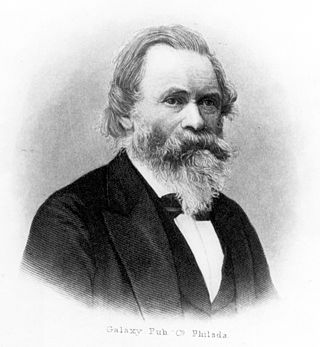
Benjamin Bannan (1807–1875) of Pottsville, Pennsylvania was a journalist and political economist. Bannan is best known for his work as editor of the Miners' Journal. The Miners' Journal reflected Bannan's belief in the Whig and then Republican ideology with which he closely identified. Bannan's connection to the anthracite Coal Region of Pennsylvania affected his political affiliation and career, as he advocated tariff protection for US industry and internal improvements.
Cressona Mall is a shopping mall in Pottsville, Pennsylvania off Route 61 and Route 183.
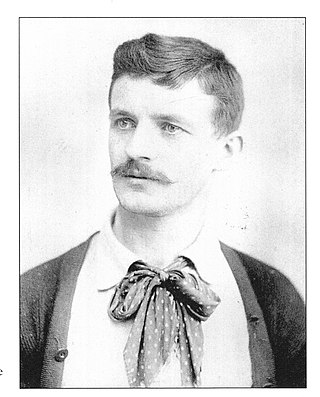
August Zeller was an American sculptor and teacher.
The Mine Hill & Schuylkill Haven Railroad (MH&SH) was operating by April 1831 in Schuylkill County, Pennsylvania, from above Mine Hill Gap to Schuylkill Haven on the Schuylkill Canal. This railroad was developed by the New York and Schuylkill Coal Co., and was one of the important early "lateral" railroads of Schuylkill County which were constructed to accommodate the Schuylkill canal with coal tonnage from the more remote areas where mines were operating. In 1862 the MH&SH was leased by the Philadelphia and Reading Railroad Company (P&RR) and became part of its operation system.
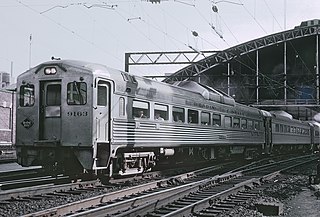
The Pottsville Line was a commuter rail service in the Delaware Valley, connecting Pottsville, Reading, and Pottstown with Philadelphia. It was the last vestige of passenger service on the former Reading main line. The service lasted into the SEPTA era and was discontinued in 1981. SEPTA continues to operate Manayunk/Norristown Line commuter trains between Philadelphia and Norristown.
















